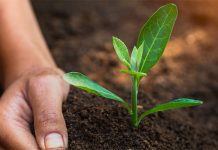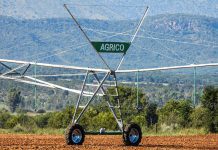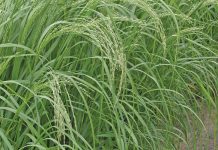PRODUCERS CAN EXPECT FEED PRICES TO decline slightly over the long term due to the effect of the biofuel industry, said Marius Nel, an Absa agricultural economist, at the recent Alltech Top Herds workshop in Stellenbosch. Farm income will be volatile, but an upward trend is generally expected. Absa believes that agricultural land will double in value over the next five years.
Nel told delegates that expropriated farmers remain farmers at heart and therefore in most cases, they are taking their money and investing it in another farm, thus supporting the increasing land prices. Dr Anton Smit, president of the SA Dairy Swiss Breeders’ Society, addressed delegates about dairy management. He said it was evident that production, cows and herd sizes have all increased.
“This has gone hand in hand with technological advancements and increased knowledge about dairy management,” he explained. But he pointed out that at the same time, fertility, longevity, and profitability have decreased. Reduced fertility is evident in a decrease in submission rates, poor conception rates, foetal losses and an increase in stillbirths. “Larger herds require more stockmanship,” Dr Smit explained. Production goals should be balanced with reproduction objectives in order to maintain long-term sustainability.
Dr Smit said producers should focus on longevity in their breeding programmes, and factors that they can control to encourage it include the type of underfoot surfaces used in sheds and curbing populations, because overly large herds can result in feed trough competition. He pointed out that dairy farmers tend to overfeed cows with protein and neglect some of the essential minerals that the animals need for optimal performance. “But minerals are poorly absorbed compared to other nutrients,” Dr Smit said, “so it’s important to take note of specific animals’ absorption capacities when feeding.” “As a general rule, younger animals can absorb minerals at a higher rate than older animals, while macro minerals are needed in larger quantities than trace minerals.” – Wouter Kriel
Honeybush association warns against unsustainable harvesting
Celebrating its 10th Anniversary NEXT year, the SA Honeybush Tea Association (SAHTA) has achieved a great deal already, but according to Marlise Joubert, much still needs to be done to ensure sustainability. “Sustainable. harvesting regulations need to be put in place urgently, as current methods will cause the destruction of this plant species within the next 10 years,” Joubert warned. SAHTA represents the producers, wild harvesters, processors and marketers of honeybush tea. It promotes cooperation between the different roleplayers and also the product.
Speaking at a recent SAHTA meeting in Stellenbosch, Joubert said the association already had an industry development plan, a Geographical Information Systems study had been conducted to identify suitable locations for cultivation, and work was being done on the geographic indicator status. “ SAHTA is involved in a honeybush research programme, which focuses on the breeding and selection of different species, cultivation, and processing techniques, Joubert said.
Dirk Troskie, agricultural economist at the Elsenburg College of Agriculture, said that the registration of honeybush tea as a geographic indicator was relevant, because it’s a unique South African product and should be protected and promoted as such. “Unfortunately the institutional framework to do this is not yet in place, but work is currently being done to make it possible,” he said. René Wolfaard, from Cape Natural Tea Products, said that the herbal tea market has seen strong growth over the last 20 years, mainly due to the development of health markets.
To date 23 different species of honeybush have been identified and the plant is restricted to the Western and Eastern Cape costal plains and mountainous regions. Honeybush has an excellent taste profile and many health benefits. It’s a relatively expensive product, due to the difficulties of harvesting it in the mountains, as well as the complex processing required. “Honeybush tea sells at between R25/kg and R35/kg, whereas other herbal teas retail between R13/kg and R20/kg,” said Woolfaard. Growth in the market will be driven by consumer education, reliable supply and consistent quality control.
Since the commercialisation of the tea in the early 1990s, the cottage industry has grown to 20 producers and three community projects. There are 30 wild harvester operators, seven processors and 15 marketing companies involved in the industry, Wolfaard confirmed. – Wouter Kriel








